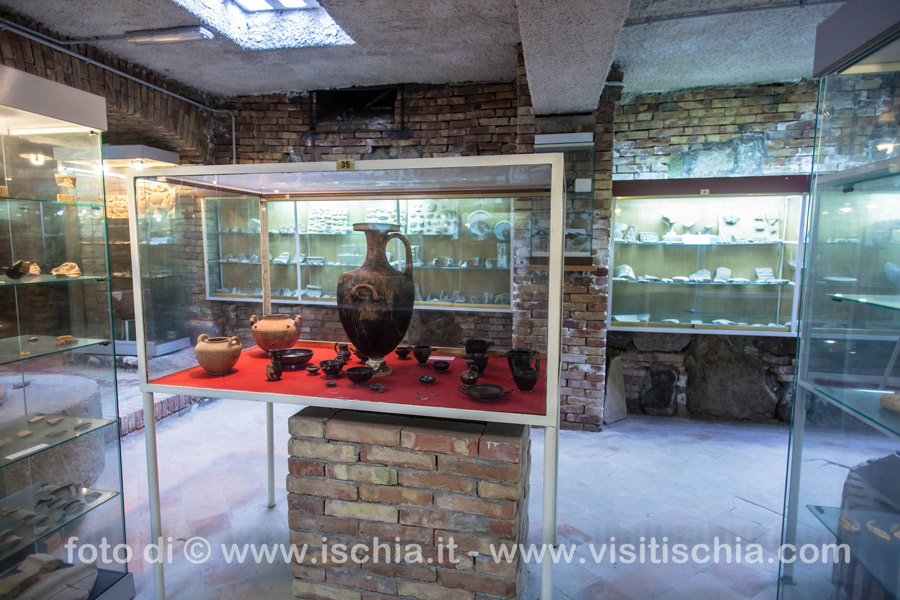The Museum owes its birth and development to the rector of the church, Don Pietro Monti. The Museum is absolutely worth a visit,
it has a prerogative that only a few other museums in the world can boast: not an inanimate and glacial place of collection of finds from the past, but direct testimony of life and culture in Ischia from the Greeks to the first Christians. The Museum, in fact, was built on the same sites of the ancient settlements. At the beginning of the 1950s, while repairing the chapel of Santa Restituta, we had the pleasant surprise of finding the early Christian crypt with numerous tombs under the floor. On the site, among other things, a clay lamp with a bunch of grapes from the 6th-7th century was also found. A.D. The discovery encouraged the improvised archaeologists to continue digging. After a while we found ourselves in front of a Christian cemetery located around the basilica obtained from a disused cistern from the Roman era. The works continued briskly, passing from surprise to surprise, until an infinite number of tombs built according to Phoenician and Punic customs, or according to the Greco-Roman ones, were brought to light.
Currently the Museum also collects numerous archaeological finds from various eras found not only in Lacco Ameno - in the places of settlement of the ancient city of Pitecusa - but throughout the island.
Near the Christian cemetery, the industrial area has even been located where the renowned Pithecusan vases were manufactured and fired and exported throughout the Mediterranean.
Currently the excavations of Santa Restituta are closed for works.



